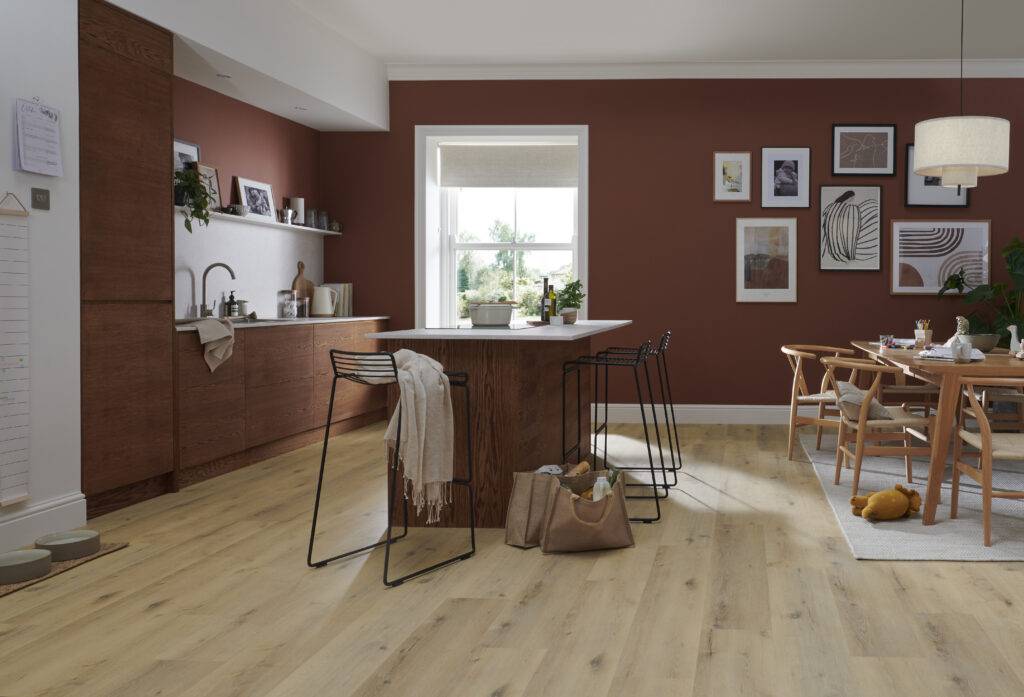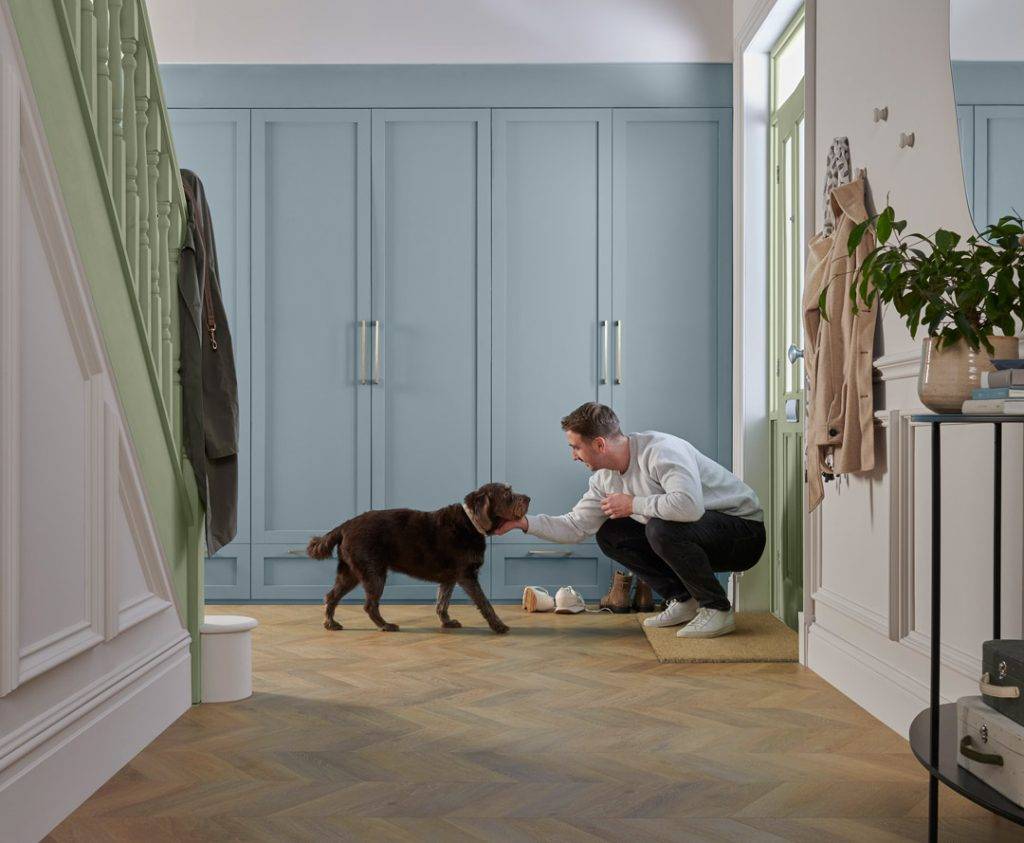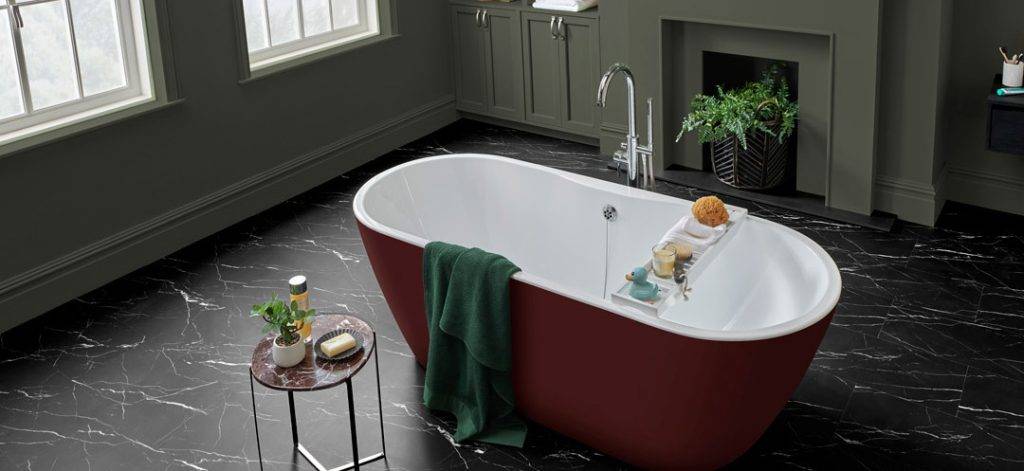Building homes from the floor up
Up to 3 FREE Samples
Building homes from the floor up
Up to 3 FREE Samples
Luxury Vinyl Tile (LVT) has been rising sharply in popularity, known for its fantastic replication of natural materials like wood, stone and ceramic. It has great scratch and water resistance, can survive in areas of heavy foot traffic and is the second most comfortable flooring option next to carpets.
But what about its use on stairs? Stair coverings are a crucial thing to consider, as the material you choose will contribute to the style, safety, comfort and durability. This blog will delve into why you really should consider LVT as an option on your stairs, exploring its benefits and drawbacks, and examining the installation process.
The following are the benefits of using LVT on the stairs…
LVT is usable in nearly any room with next to no extra steps being needed in order to make the place comfortable and beautiful. However, there are a couple of things you may want to consider when putting LVT on your stairs.
DIY Installation will save on the overall cost of your home improvement, but it requires a lot of skill. If you do not have this level of skill, and have little experience with LVT, then we do not recommend you try to apply LVT (especially glue down) to the staircase.
Professional installers cost money, but they are skilled, have high-quality tools and are bound by contract to ensure that you have a precise and durable fit.
Remember, LVT on your stairs does not only dictate how nice and quiet your home will be but also how safe it is to use the stairs themselves.
Overall, we maintain that there is no area in your home that will not benefit from having LVT installed, as we believe it to be the most advanced and beneficial flooring option on the market. We hope you fulfil all your home improvement needs and that LVT proves to be a great option on your stairs and elsewhere in your home.
Recently Viewed
Related Articles
The Natural LVT flooring trend: Bring the Outdoors in
Crafting Industrial Style: Decorating with Stone Effect LVT Flooring from Luvanto
How to Style Dark Flooring
How to Style Herringbone Flooring
Understanding LVT Specifications and Technical Details: Your Guide to a Perfect Floor
Waterproof LVT for High-Moisture Bathrooms
Clay Earth
Midnight Olive
Coastal Cottage




Trends come and go but a Luvanto floor is forever.
Keep your interiors looking show-home worthy with our colour and trend inspiration. As experts in colour forecasting and pairings, we match the latest trends and colours with each of our flooring shades so you can stay tickled pink with your décor all year round.
Flooring
Inspiration
Where To Buy
Help And Support
Copyright © 2024 Luvanto - QA Flooring Solutions Ltd. All Rights Reserved.
QA Flooring Solutions Ltd is a company registered in England
Registered Office: Unit 2 Hurricane Drive, Speke, Liverpool, L24 8RL
Company Registration Number: 07870268 | VAT Number: 852026449
| Cookie | Duration | Description |
|---|---|---|
| cookielawinfo-checkbox-analytics | 11 months | This cookie is set by GDPR Cookie Consent plugin. The cookie is used to store the user consent for the cookies in the category "Analytics". |
| cookielawinfo-checkbox-functional | 11 months | The cookie is set by GDPR cookie consent to record the user consent for the cookies in the category "Functional". |
| cookielawinfo-checkbox-necessary | 11 months | This cookie is set by GDPR Cookie Consent plugin. The cookies is used to store the user consent for the cookies in the category "Necessary". |
| cookielawinfo-checkbox-others | 11 months | This cookie is set by GDPR Cookie Consent plugin. The cookie is used to store the user consent for the cookies in the category "Other. |
| cookielawinfo-checkbox-performance | 11 months | This cookie is set by GDPR Cookie Consent plugin. The cookie is used to store the user consent for the cookies in the category "Performance". |
| viewed_cookie_policy | 11 months | The cookie is set by the GDPR Cookie Consent plugin and is used to store whether or not user has consented to the use of cookies. It does not store any personal data. |
Building homes from the floor up
Up to 3 FREE Samples